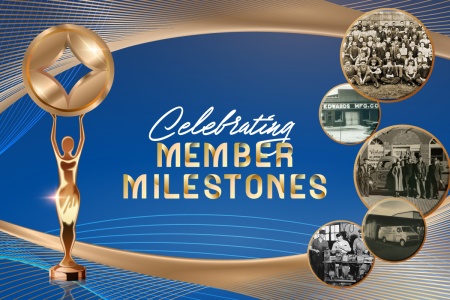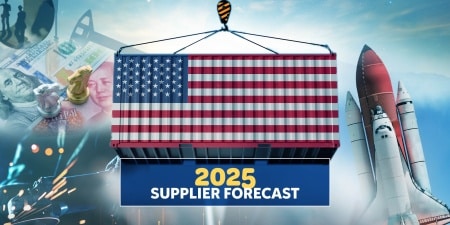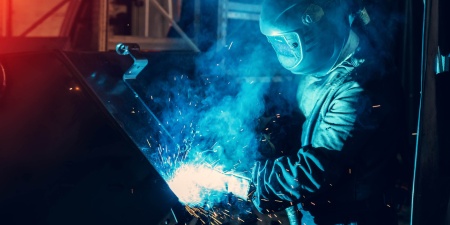By Ken Thompson
Dating back many years, our trade association has always used the early months of the arriving New Year to offer business forecasts for the following twelve months. The practice falls back to the Penton Publishing Welding Design & Fabrication editions, continuing with GAWDA Media as it serves the NWSA and GAWDA sequencing. Suppliers and distributors alike deployed every method from an index finger searching for the prevailing wind, to sophisticated analysis of changing markets, footprint sensitive activities, and new and changing business models, products, and services. For the public companies among our mix, these forecasting activities became underpinnings for the “guidance” provided to boards, shareholders, and other investors. Most involved in these forecasting activities base approaching budgets, activity goals, and, yes, compensation and bonus incentives on the predictions.
While we all can write some numbers down on a piece of paper that estimates the future, we cannot positively identify the “disruptive activity” that can blindside us. Who, as we did our following year forecasting in December of 2019, saw COVID on the radar?
Putting our spread sheets aside, what disruptive potential resides on the horizon that requires some consideration? A few surface immediately. Impacts of a digitally connected supply-chain are front and center. Consequences of “all things” connected to ENERGY surround us. Changes in our work force – retirement of knowledge and experience, skill sets and work habits of those joining our ranks, succession in so many of our family-owned businesses, and the result of industry wide consolidation.
It is impossible to read a trade association article, attend a webinar, sit in a meeting audience, or network with an associate and not be aware of the enormous shift in all distribution vertical practices toward seamless digitized supply chain activities. The “headliners” – MSC, Fastenal, Grainger, and Amazon – report huge adoption rates, significant growth in revenue and margin and streamlining of logistic services.
While the welding and packaged gases hard goods portfolio matches up more closely with MRO products, other distribution verticals in HVAC, plumbing, Jan/San, office products, and electrical components are all deeply engaged in B2B relationships with their clients. The “gold standard” is likely Schneider Electric, a $26 billion French owned company (120,000 employees) manufacturing and distributing electronic components. They have not only perfected their own e-commerce platform, but have successfully integrated it with their independent distribution partners to serve clients preferring to do business with local companies.
Agree with it or not, our gases and welding distribution model feel these impacts every day. The argument that “we are different” because of the gases portion of our portfolios is wishful thinking. We absolutely need our hard goods sales to help underwrite our infrastructure costs, and these SKUs are escaping us and headed through alternate, electronically connected channels. Our hard goods suppliers – many loyal to our channel to a fault for so many years see this migration, too.
They are obligated to their respective investors to follow the path to greatest success. If our distribution network does not offer these electronic paths to end markets, our suppliers must follow the alternatives. Those alternate options include building their own electronic pathways directly with end users or following those already in place and performing well. The GOOD NEWS is that many in our industry space are actively engaged in building out these capabilities so that they can sustain their respective market relationships and effectively represent their suppliers.
ENERGY underpins so much of our business activity. All our atmospheric gas making processes consume enormous amounts of energy. Increased costs of electricity force up the cost of production. Many storage facilities require refrigeration – more electric power. Today, the transportation element is heavily dependent on diesel fuel, and regardless of wishful thinking about powering future transportation, in the immediate future we have to deal with high and unstable energy costs. Energy also plays a major role in all hard goods products – steel making, rubber and plastics, cannabis growing, powering our computers, and lighting, heating, and cooling our facilities. These variables require constant cost management, and must be reallocated in the cost of our services to the client – inflation is no-where near under control.
The entire industry struggles with labor costs. The aging of our experienced and talented work force is nothing new. However, the locating, hiring, training, compensating, and retaining of a competent and productive work force is increasingly more difficult. Those entering meaningful employment today have very high expectations. For the past two years, job seekers have grown accustomed to remote work environments, place high dollar value on yet-to-be-proven skills, seek a package of benefits and “rights” that stress work-place efficiencies, upsetting balances for advancement and reward mechanisms long satisfactory within a “best place to work” atmosphere. Consultants tell owners and managers that “they must manage differently,” but the bottom line is that labor costs dramatically increase, and these costs must eventually be absorbed in the products and services offered to end users.
The welding and gases distribution business has been absolutely blessed with so many small family or privately owned companies – both on the supplier and distributor side. That is one very important ingredient in the comradery of our business models, and a significant contributor to the high level of genuine sharing, networking, and friendships that make our industry unique.
Families would often “run out of sons and brothers” and force an ownership change. Today, we are truly fortunate that “daughters and sisters” are taking a keen interest in perpetuating the family business model. The proof is before one as they view industry committee membership and rotation through the Chairs. Executive offices and board rooms of our public company partners reveal like images. Further, many owners facing a situation where no family succession alternatives exist are establishing an ESOP structure where long term, loyal, and productive employees can guarantee the future of the company.
If these succession options had been on the horizon 30 years ago, one would wonder whether we would have ever been introduced to Airgas, PDI, Trigas, TechAir, or others?
Regardless of the way succession is shaped in the years going forward, we will ALWAYS see some level of consolidation. It will come in the form of private equity roll ups as well as regional independents collaborating with businesses in adjacent footprints. Either activity will lead to some level of disruption, as there is always some fall out when these consolidations occur. Even though a non-compete Agreement seems endless to the affected individual, many times a re-birth occurs when the individual or individuals re-join the industry. There is some chemistry in welding and gases that one cannot totally dismiss – they often come back.
So, BE PREPARED! There will be DISRUPTIONS that will change the best prepared 2023 business forecast. Often, what might appear to be a devastating disruption may offer a significant opportunity on the back side. Our industry leaders are resourceful people. If there is a slight chance of a good outcome, they will find it. Good luck to all of GAWDA in 2023.










